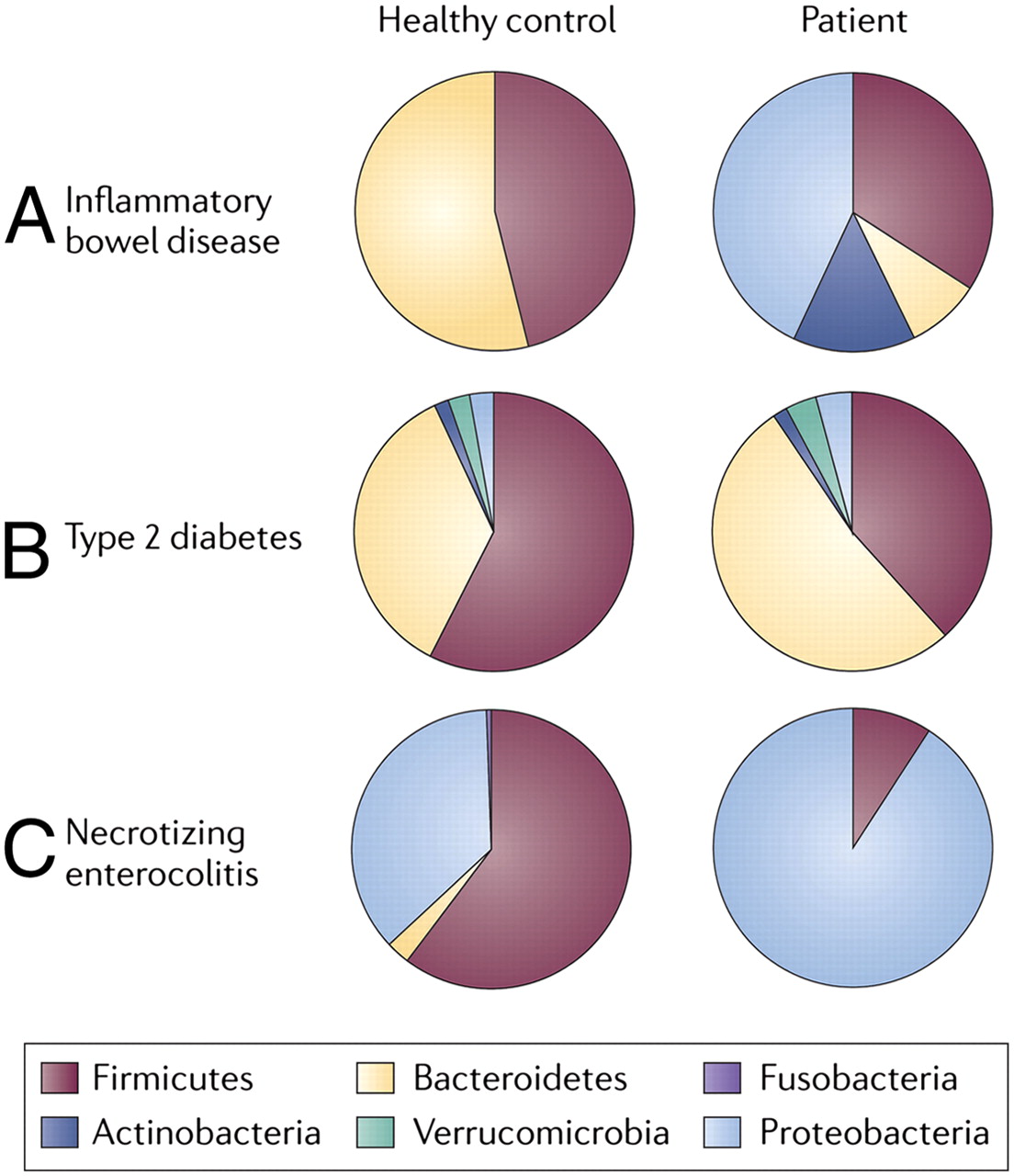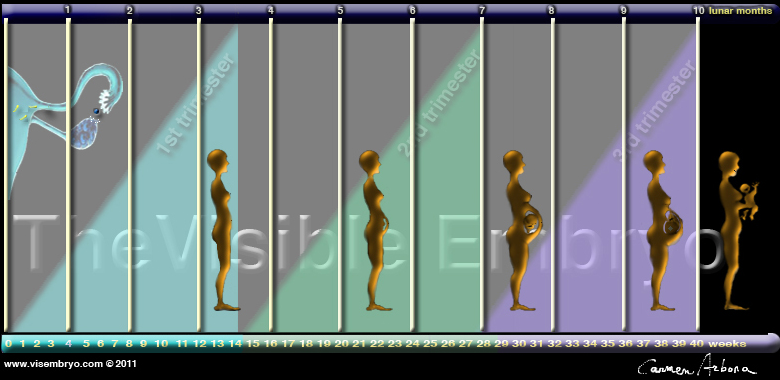|
|
Uterine microorganisms may set stage for disease
Experts review the potential influence of a developing infant's microbiome on its' own potential birth defects and childhood diseases.
The term "microbiome" refers to the trillions of organisms we harbor, on our skin and within our respiratory and gastrointestinal tracts.
Researchers are looking at the importance of microorganisms which exist in our gut. Their presence may reflect disturbances in the environment during pregnancy or delivery, and even in our own early infancy. These microorganisms could impact our baby's early developing microbiome and set the stage for health problems later in its' life.
An article "The Microbiome and Childhood Diseases" in a special issue of the Birth Defects Research Part C EmbryoToday scientific journal, is a collection of ground breaking microbiota reviews. One particularly noteworthy finding pertains to the womb environment in which a baby develops.
"One of the reviews, by Koleva et al., discusses studies that reveal the womb is not sterile and that microbiota of the child are already developing in utero. This means that not only do we have to consider the microbiome of the child but also of the mother.
"The irony is that some of our modern medical practices, through their effect on these early microbiota, could have unintended consequences, interfering with normal development of children's immune, metabolic, and neurologic systems."
Sharon Meropol MD PhD, Associate Director for Research and Evaluation at University Hospitals Rainbow Babies & Children's Hospital's Center for Child Health and Policy, Assistant Professor of Pediatrics at Case Western Reserve University School of Medicine.
This special issue is particularly timely as Birth Defects Prevention Month was kicked off in January 2016. According to Dr. Meropol, increasing evidence supports the importance of protecting key steps in the transfer and maintenance of the normal microbiota in pregnant mothers and fetuses.
"Disturbed microbiota could potentially contribute to a wide range of childhood diseases including allergies, asthma, obesity, and autism-like neurodevelopmental conditions.
"But recent studies suggest that traditional practices like vaginal births, skin-to-skin contact immediately after birth and breastfeeding may promote the development of the microbiome in the infant and help set the trajectory towards healthy development."
Sharon Meropol MD PhD
University Hospitals Rainbow Babies & Children's Hospital's visionary physician researchers: John Kennell MD, and Lydia Furman MD, were early proponents of vaginal delivery, and kangaroo care (skin to skin contact) and breastfeeding immediately following birth.
They advised more than a decade ago that these practices are associated with psychosocial, metabolic and immunologic benefits for full-term and premature infants. See their publication at ACTA Paediatrica. Since 2007, compelling evidence has continued to mount that practices such as breastfeeding and skin-to-skin kangaroo care are beneficial for intergenerational transfer of the microbiome from mother to infant.
Dr. Meropol and Amy Edwards MD, pediatric infectious disease specialists at University Hospitals Rainbow, provide an overview of the potential influences of the developing infant microbiome from the clinical perspective in the special issue of Birth Defects Research Part C EmbryoToday.
"We have just scratched the surface in understanding how the internal universe of maternal, fetal and infant colonizing microbiota, interacting with genetic and environmental factors, can influence optimal child development.
"We are grateful to The Teratology Society for recognizing the importance of this research and shedding light on the evolving story of the microbiome."
Sharon Meropol MD PhD
Abstract The microbiome and childhood diseases: Focus on brain-gut axis
Many childhood diseases such as autism spectrum disorders, allergic disease, and obesity are on the increase. Although environmental factors are thought to play a role in this increase. The mechanisms at play are unclear but increasing evidence points to an interaction with the gastrointestinal microbiota as being potentially important. Recently this community of bacteria and perturbation of its colonization in early life has been linked to a number of diseases. Many factors are capable of influencing this colonization and ultimately leading to an altered gut microbiota which is known to affect key systems within the body. The impact of the microbial composition of our gastrointestinal tract on systems outside the gut is also becoming apparent. Here we highlight the factors that are capable of impacting on microbiota colonization in early-life and the developing systems that are affected and finally how this may be involved in the manifestation of childhood diseases. Birth Defects Research (Part C) 105:296–313, 2015. © 2015 Wiley Periodicals, Inc.
Birth Defects Research Part C EmbryoToday scientific journal, (Volume 150, Issue 4) will be released Monday, December 28, 2015. The DOI for the overview article is DOI: 10.1002/bdrc.21119.
About University Hospitals Rainbow Babies & Children's Hospital
Internationally renowned, UH Rainbow Babies & Children's Hospital is a full-service children's hospital and pediatric academic medical center with experts in 16 medical divisions and 11 surgical specialties who offer nationally ranked care not available at other institutions in the region, including a center dedicated to adolescent and young adult cancer treatment and Northeast Ohio's only single-site provider of advanced maternal fetal medicine and neonatology services. As the primary pediatric affiliate of Case Western Reserve University School of Medicine and the only Level I Pediatric Trauma Center in the region, UH Rainbow Babies & Children's Hospital offers access to novel therapies, advanced technologies and clinical discoveries long before they are available nationwide. Rainbow pediatric specialists - all of whom also serve on the faculty at the School of Medicine - are engaged in today's most advanced clinical research and are widely regarded as the best in the nation - and in some specialties, the best in the world. Learn more at Rainbow.org.
About The Teratology Society
The Teratology Society, an international professional group of scientists hailed as the premier source for cutting-edge research and authoritative information related to birth defects and developmentally-mediated disorders, publishes Birth Defects Research. The Teratology Society is made up of nearly 700 members worldwide specializing in a variety of disciplines, including developmental biology and toxicology, reproduction and endocrinology, epidemiology, cell and molecular biology, nutritional biochemistry, and genetics as well as the clinical disciplines of prenatal medicine, pediatrics, obstetrics, neonatology, medical genetics, and teratogen risk counseling. For more information visit http://www.Teratology.org.
Return to top of page
|
|
|
Jan 11, 2016 Fetal Timeline Maternal Timeline News News Archive

Comparison of the abundance of the predominant bacterial phyla in IBD, type 2 diabetes,
and NEC compared to healthy controls. Fecal samples from infants with NEC and patients
with type 2 diabetes were compared with healthy controls and reveal the predominance of Proteobacteria in patients with NEC.
Image Credit: Spor A, Koren O, Ley R. Unravelling the effects of the environment and host genotype on the gut microbiome, Nature Reviews: Microbiology
|
|
|
|



